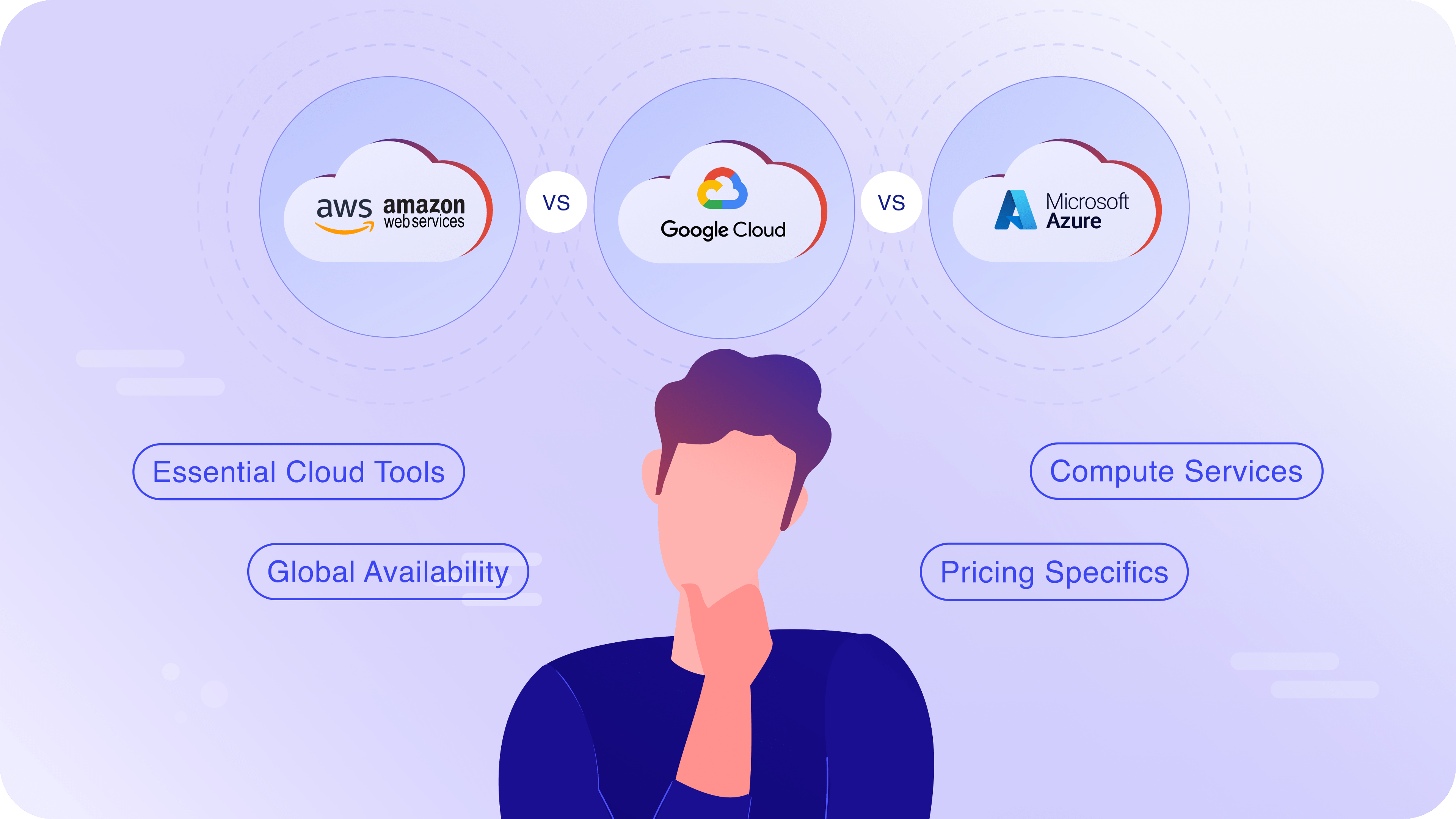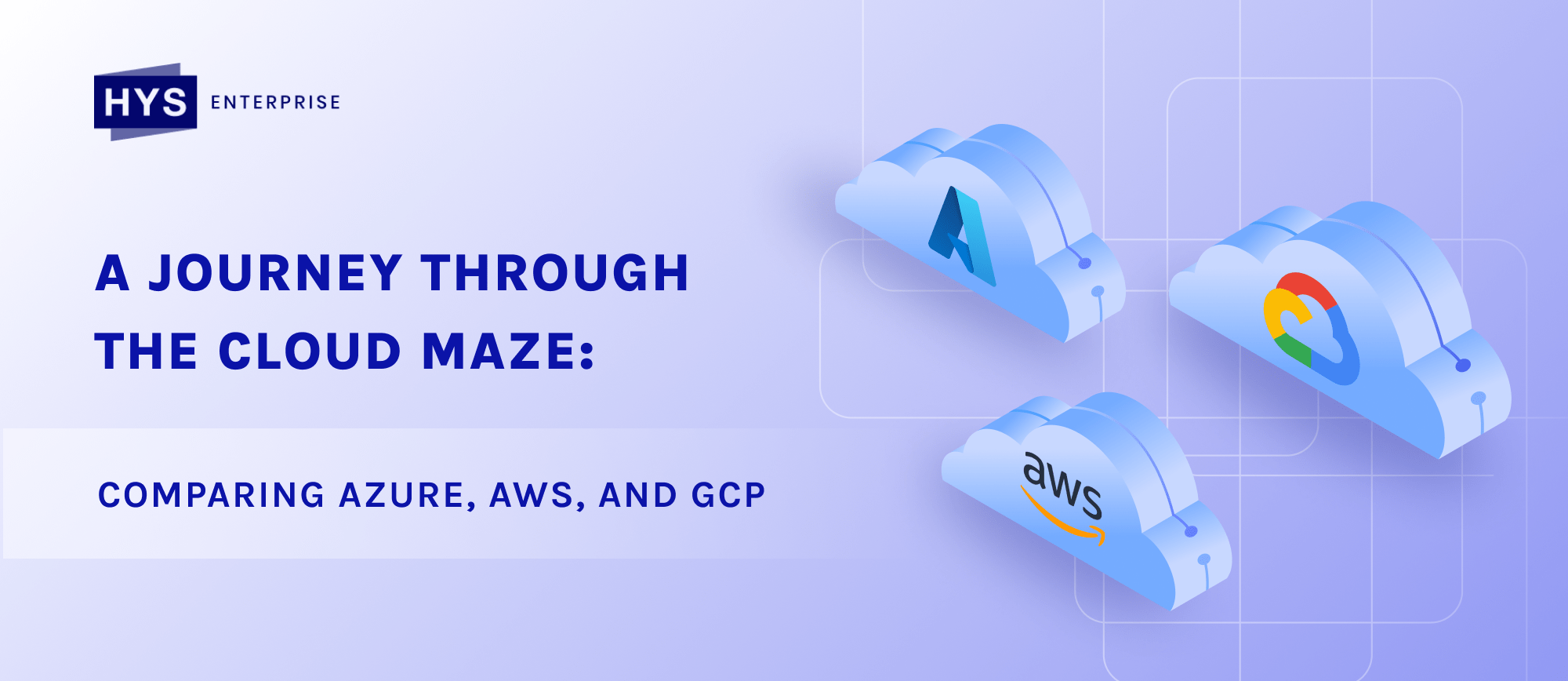Country-by-Country Look at Cloud Provider Dominance
In Japan, Azure has the biggest market share, followed by AWS and GCP. Microsoft Azure has 49% of the market share in Japan, while AWS’ market stake is 31%, and GCP has 20% of the share.
The Polish cloud market is not crucially different from the Japanese, with the same 49% of Azure share, but AWS increased to 35%, while GCP’s market share is 16%.
The cloud market in the Netherlands shows a lot of love for Microsoft Azure, which has a whopping 67% market share. AWS has 25% and GCP only 8% of market control.
The situation in the cloud market of the United States is completely different from the countries mentioned above, with AWS as the clear leader, followed by Azure and GCP. AWS’s market share in the USA is 52%, while Azure’s market slice is 37% and GCP’s market stake is 11%.
India’s cloud market appears similar to the marketplace of the US due to the placement of AWS as a primary option, leaving Azure and GCP behind. AWS took 52% of the market, Microsoft Azure has 35%, and GCP’s market share is only 13%.
In essence, we can note some key takeaways:
- Microsoft Azure dominates in Japan, Poland, and the Netherlands.
- Amazon Web Services leads the charge in the United States and India.
- Google Cloud Platform consistently holds the smallest market share across all countries analyzed.
- Regional differences highlight the multifaceted nature of cloud adoption.
As we already know about our cloud titans in numbers, let’s dive into the basics of Azure, AWS, and GCP before we jump into the comprehensive comparison.
An Overview of Azure, AWS, and GCP
Microsoft Azure
Launched in 2010 by Microsoft, Azure has become the second-largest cloud provider globally, capturing a 24% market share as of Q4 2023. Similar to AWS, Azure offers an extensive range of services but distinguishes itself by specializing in Windows-based computing and seamless integration with other Microsoft offerings.
Amazon Web Services
A cloud computing pioneer since 2006, Amazon Web Services (AWS) now leads with an impressive 31% market share (as of Q4 2023). This comprehensive cloud infrastructure provider empowers enterprises of all sizes, from startups to established giants, with a variety of services – computing, networking, storage, analytics, databases, and even cutting-edge machine learning and AI capabilities.
Google Cloud Platform
Launched in 2011, Google Cloud Platform (GCP) has pinned its position as the world’s third-largest cloud provider, getting an 11% market share by Q4 2023. While having an array of services similar to AWS and Azure, Google Cloud stands out with its DevOps-friendly solutions and a smaller, strategically located data center network.
Knowing a bit more about the history of Azure, AWS, and Google Cloud, let’s move on and explore the comparison and contrast between these three knights of the cloud kingdom.

In-depth Comparison of Features
Pricing Specifics
Choosing the right cloud provider can be overwhelming, as each offers a wide range of services at different prices. Let’s take a look at the table that shows a comparison of key pricing aspects of Azure, AWS, and GCP:
|
Feature |
Microsoft Azure | Amazon Web Services (AWS) | Google Cloud Platform (GCP) |
|
Pricing Model |
Pay-as-you-go, Reserved Instances, Azure Hybrid Benefit | Pay-as-you-go, Reserved Instances, Savings Plans |
Pay-as-you-go, Sustained Use Discounts, Committed Use Discounts |
|
Free Tier |
$200 credit for 30 days, access to selected services | 12 months of free access to a limited tier of services |
$300 credit for 12 months, access to selected services |
| Discounts | Up to 75% off with Reserved Instances, up to 72% off with Azure Hybrid Benefit | Up to 75% off with Reserved Instances, up to 72% off with Savings Plans |
Up to 30% off with Sustained Use Discounts, up to 70% off with Committed Use Discounts |
While all three cloud providers offer pay-as-you-go pricing, they also have options for significant discounts through reserved instances, committed use discounts, or long-term usage discounts. Evaluating your specific needs and usage patterns will help you decide which platform offers the most cost-effective solution.
Compute Services
While connecting nodes might seem simple, how each platform handles its computational resources defines its suitability for different needs. This table shows the key aspects of Azure, AWS, and GCP compute offerings:
|
Service |
Microsoft Azure | Amazon Web Services (AWS) | Google Cloud Platform (GCP) |
|
PaaS |
App Service | AWS Elastic Beanstalk |
Google App Engine |
| FaaS | Azure Function | AWS Lambda |
Google Cloud Functions |
|
Server Instance |
Azure Virtual Machine | EC2 (Elastic Compute) |
Google Compute Engine |
| Container | Azure Kubernetes Service (AKS) | AWS Elastic Container |
Google Kubernetes Engine |
Despite similar core compute services like virtual machines and serverless features, Azure, AWS, and GCP offer different Platform-as-a-Service (PaaS) and containerization options. When selecting a provider, consider your project’s requirements for pre-configured environments to maximize the benefits of the migration.
Essential Cloud Tools
Navigation in the world of cloud tools is difficult, with each provider offering a variety of options. This chart compares key tools across Azure, AWS, and GCP, to help you find the best fit for your needs:
|
Feature |
Microsoft Azure | Amazon Web Services (AWS) |
Google Cloud Platform (GCP) |
|
Storage |
Azure Blob Storage, Azure Files, and Azure Managed Disks | Amazon Simple Storage Service (S3), Amazon Elastic Block Store (EBS), and Amazon FSx |
Google Cloud Storage, Google Cloud Filestore, and Persistent Disks |
|
Databases |
Azure SQL Database, Azure Cosmos DB, and Azure PostgreSQL | Amazon Relational Database Service (RDS), Amazon DynamoDB, and Amazon Aurora |
Cloud SQL, Cloud Spanner, and Firestore |
|
Analytics |
Azure Synapse Analytics, Azure Databricks, and Azure HDInsight | Amazon Redshift, Amazon Kinesis, and Amazon EMR |
BigQuery, Dataflow, and Dataproc |
|
Machine Learning |
Azure Machine Learning, Azure Databricks ML | Amazon SageMaker, Amazon Machine Learning (Amazon ML) |
Vertex AI, Cloud TPUs |
|
Management/Monitoring |
Azure Monitor, Azure Automation | Amazon CloudWatch, AWS Systems Manager |
Cloud Monitoring, Cloud Logging, and Cloud Operations Suite (COS) |
|
Security/Identity |
Azure Active Directory, Azure Security Center | AWS Identity and Access Management (IAM), AWS Security Hub |
Cloud Identity & Access Management (IAM) and Cloud Data Loss Prevention (DLP) |
Optimizing your cloud experience depends on your project’s core needs. Azure excels in developer-friendly PaaS options with a focus on hybrid environments. AWS boasts the most extensive service catalog, making it ideal for complex or highly specialized workloads. GCP shines in cost-effectiveness and data analytics, particularly for big data processing.
Global Availability
Global reach and availability are crucial for diverse user bases and disaster recovery needs. Let’s check the table below, which highlights key aspects of the global impact of Azure, AWS, and GCP:
|
Criteria |
Microsoft Azure | Amazon Web Services (AWS) | Google Cloud Platform (GCP) |
|
Cloud Regions |
62 | 32 |
39 |
|
Global Presence |
140 countries | 200+ countries and territories | 200+ countries and territories |
| Availability Zones | 120 | 102 |
118 |
For geographically dispersed users, global reach is paramount. While all three providers offer extensive coverage, AWS boasts the most regions (32) and the widest country presence (200+). However, Azure has the highest availability zones (120) for added excess within regions.
Conclusion
To sum up, in this fierce competition, each platform has its strengths, and the choice depends on specific needs and preferences, but from our side, we can recommend the Microsoft Azure platform. While each provider offers unique features, migrating to Azure can unlock significant benefits for your business, and HYS Enterprise can become your guide in this journey. Our team of experts will guide you through every step of the process, ensuring a smooth transition and maximizing the potential of your cloud environment. Don’t waste time and take action — request a consultation to discuss your Azure migration journey!
